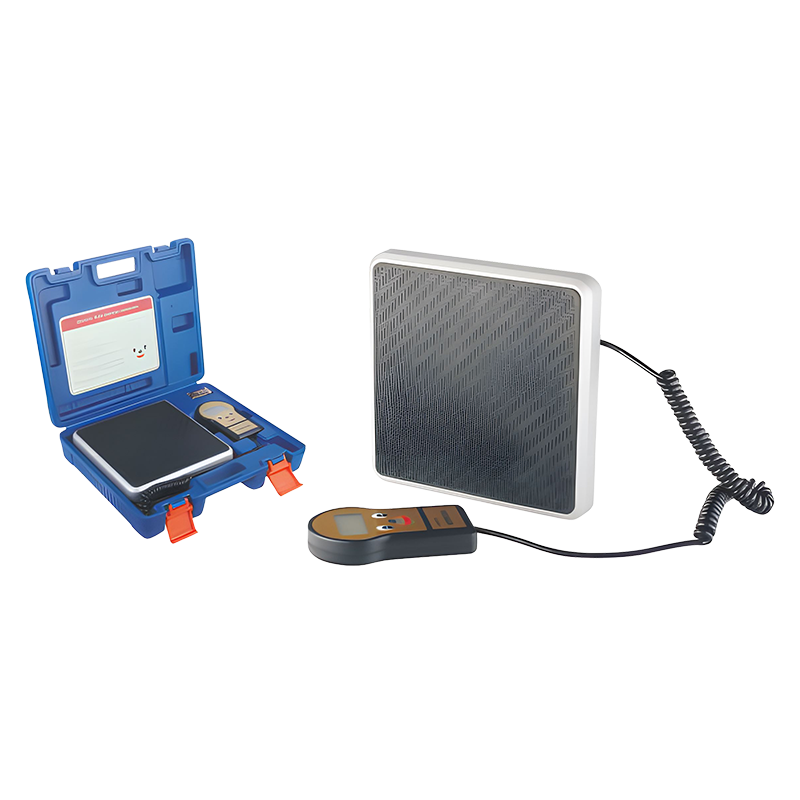Nov 07, 2025
1. Classification by Capacity and Size

(1) Compact scales
Compact refrigeration electronic scales are designed for low-capacity weighing, typically ranging from a few grams up to several kilograms. These scales are suitable for small retail environments, bakery counters, or food sampling stations where precise measurements of individual portions are required. For instance, a supermarket in Guangzhou uses compact refrigeration scales to weigh deli meats and cheeses for customer purchase. Their small footprint and easy handling make them convenient for limited counter space.
(2) Medium-capacity scales
Medium-capacity scales can handle weights ranging from several kilograms up to 30 or 50 kilograms, making them suitable for larger packaged goods or bulk food items. Food processing facilities often employ medium-capacity refrigeration scales to weigh prepared meals or packaged frozen products before storage or shipment. A factory producing frozen dumplings in Shanghai uses medium-capacity scales to ensure each package meets specified weight requirements, maintaining consistency for retail distribution.
(3) High-capacity scales
High-capacity refrigeration electronic scales are capable of weighing larger or heavier items, sometimes exceeding 100 kilograms. These scales are typically used in industrial kitchens, warehouses, or large-scale frozen food distributors. For example, a cold storage warehouse supplying frozen seafood to multiple restaurants in Beijing uses high-capacity scales to weigh crates of fish before transport. These scales must be robust and resistant to environmental conditions such as cold temperatures and moisture exposure.
2. Classification by Display and Connectivity
(1) Basic digital display scales
Basic models feature a simple digital display that shows weight clearly and accurately. These scales are commonly used in retail or small kitchen environments where connectivity or advanced features are not essential. A local butcher shop may use a digital refrigeration scale with a clear LED display to provide customers with immediate weight readings for fresh or frozen meat products.
(2) Scales with integrated printers
Some refrigeration electronic scales include built-in printers to produce labels or receipts directly from the scale. These are particularly useful in supermarkets, deli counters, and food service operations where accurate labeling of frozen or refrigerated items is required. For instance, a grocery store in Shenzhen uses scales with printers to generate weight and price labels for packaged seafood, ensuring compliance with regulatory standards.
(3) Networked or smart scales
Modern refrigeration electronic scales often support connectivity to computers, inventory systems, or cloud-based platforms. These scales allow real-time tracking of stock levels, automatic data logging, and integration with point-of-sale systems. A frozen food distribution center in Shanghai employs networked scales to streamline inventory management, enabling staff to track batch weights and update records without manual input, improving efficiency and accuracy.
3. Classification by Application-Specific Designs
(1) Countertop scales
Countertop refrigeration electronic scales are designed for direct use on counters in retail or kitchen settings. They are compact, easy to operate, and often feature protective coatings or water-resistant surfaces to withstand cold or humid conditions. For example, a bakery using refrigerated ingredients such as butter or cream operates countertop scales to measure precise portions for pastries.
(2) Platform or floor scales
Platform scales provide a larger weighing surface, suitable for bulk containers, crates, or pallets. These scales are typically found in warehouses, production lines, or cold storage facilities where large quantities of frozen or refrigerated products need to be weighed. A seafood processing plant uses floor refrigeration scales to weigh boxes of shrimp and fish before packaging and shipment.
(3) Portioning and labelling scales
Some scales are specifically designed for portion control and labeling in food production. They combine precise weighing, labeling capabilities, and cold-resistant construction to ensure consistent packaging. For instance, a factory producing frozen ready-to-eat meals uses portioning scales to weigh individual meals, attach labels with weight and expiration information, and then move the meals to refrigerated storage.